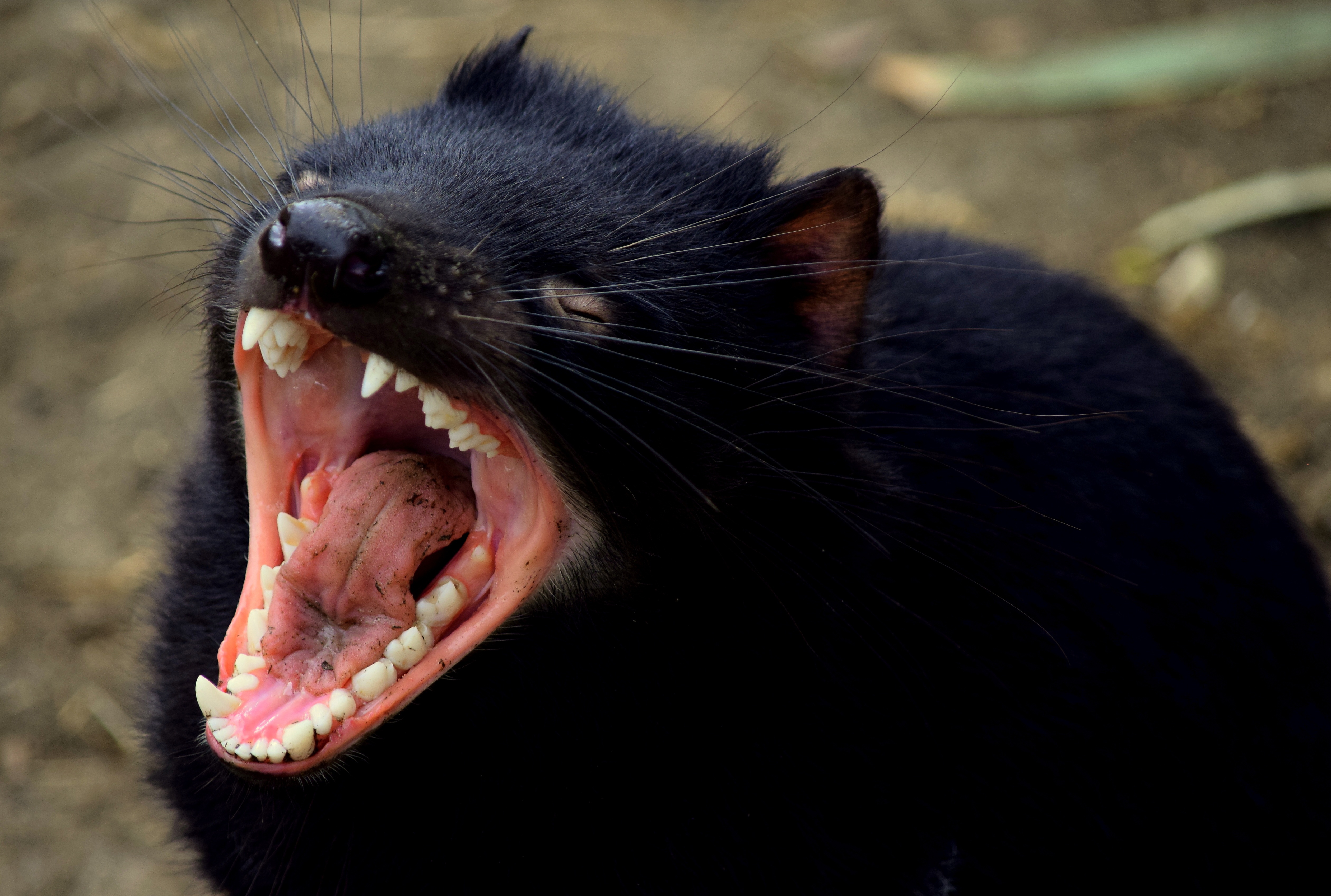Media release
From: Griffith UniversityAmid the global COVID-19 crisis, a study released this week has some good news about a wildlife pandemic, which may help scientists better understand how other emerging diseases evolve.
Griffith University researchers were part of an international collaboration that found the transmissible cancer decimating Tasmanian devil populations is unlikely to spell their doom.
The research team, led by Washington State University biologist Professor Andrew Storfer, employed phylodynamics, which analyses small changes in the genetic code, to reconstruct the epidemiology and spread of Tasmanian devil facial tumor disease since its emergence in the 1990s.
Phylodynamics is typically used to track how viruses such as influenza and SARS-CoV-2 spread and evolve over time, based on detailed knowledge of changes in their genetic information.
“This research has opened the door for applying phylogenetics to genetically more complex pathogens, like the Tasmanian devil facial tumor disease for which the genome is far bigger and more complex than that of any virus,” said Professor Hamish McCallum from the Environmental Futures Research Institute.
The study published in Science indicated that the devils’ pandemic is shifting from an emerging disease to an endemic one.
“Because of the COVID-19 pandemic, people are becoming familiar with the R number of a pathogen, the number of people that one infected person will pass the virus on to,” Professor McCallum said. “Our analysis shows that R has decreased for the Tasmanian devil facial tumor disease and the disease has now slowed.
“One infected devil initially passed the disease on to 2.5 other animals, but now each infection leads to only one or fewer additional infections.
“It is cautiously optimistic good news,” Professor Storfer said. “I think we're going to see continued survival of devils at lower numbers and densities than original population sizes, but extinction seems really unlikely despite predictions a decade ago.”
This conclusion reinforces the findings of a Griffith-led mathematical model published in 2019 that used field recapture data rather than genetic information.
“When two very different approaches lead to the same result that devils are unlikely become extinct, then I think we can have confidence in the conclusion” Professor McCallum said.
Since its identification in 1996, Tasmanian devil facial tumor disease has reduced populations of the iconic marsupial by more than 80%. The devils spread the infection when they fight and bite each other on the face. The disease is still largely fatal to Tasmanian devils who contract it, but it appears to be reaching an equilibrium.
“Our results suggest the active management practice of releasing captive-bred devils into the wild may not be necessary and could actually be harmful,” Professor Storfer said.
“This study suggests that Tasmanian devils have rapidly evolved in the wild and changed genetically to tolerate or resist the cancer,” Professor McCallum said.
“If we were to release captive animals, bred from populations that haven’t been exposed to the disease, we run the risk of slowing down or even reversing these genetic changes. This is likely when captive-reared animals interbreed with those in the wild.”
To date, researchers have relied on field studies and modeling to try to understand the spread of the Tasmanian devil facial tumor disease. This is the first time that phylodynamics, a tool that uses genetic sequencing to investigate evolutionary relationships among pathogen strains to understand and predict disease spreads across a population, has been used successfully to trace this transmissible cancer.
“What also makes this disease much more difficult than a virus like COVID-19 to trace genetically, is that it is a type of cancer, which mutates the animals’ own cells. That means we have to trace the changes in the Tasmanian devils’ genes, of which there are thousands more than in a virus,” Professor McCallum explained.
The researchers screened more than 11,000 genes from Tasmanian devil tumor samples to find 28 genes that changed in a “clock-like” manner, showing mutations that were accumulating rapidly over time.
“To appreciate the scale of this work, the 28 identified genes are made up of more than 430,000 base pairs, the fundamental units of DNA, compared to the entire genome of the SARS-CoV-2 virus that causes COVID-19, which has only 29,000 base pairs of RNA,” Professor McCallum said.
“One of the most exciting advances this study presents is the opportunity to apply these types of approaches to virtually any pathogen,” said Dr Austin Patton at the University of California. “It opens the door to using the kind of methods that have been shown to be so important in the study of viruses to a whole new suite of pathogens that impact humans as well as wildlife.”


